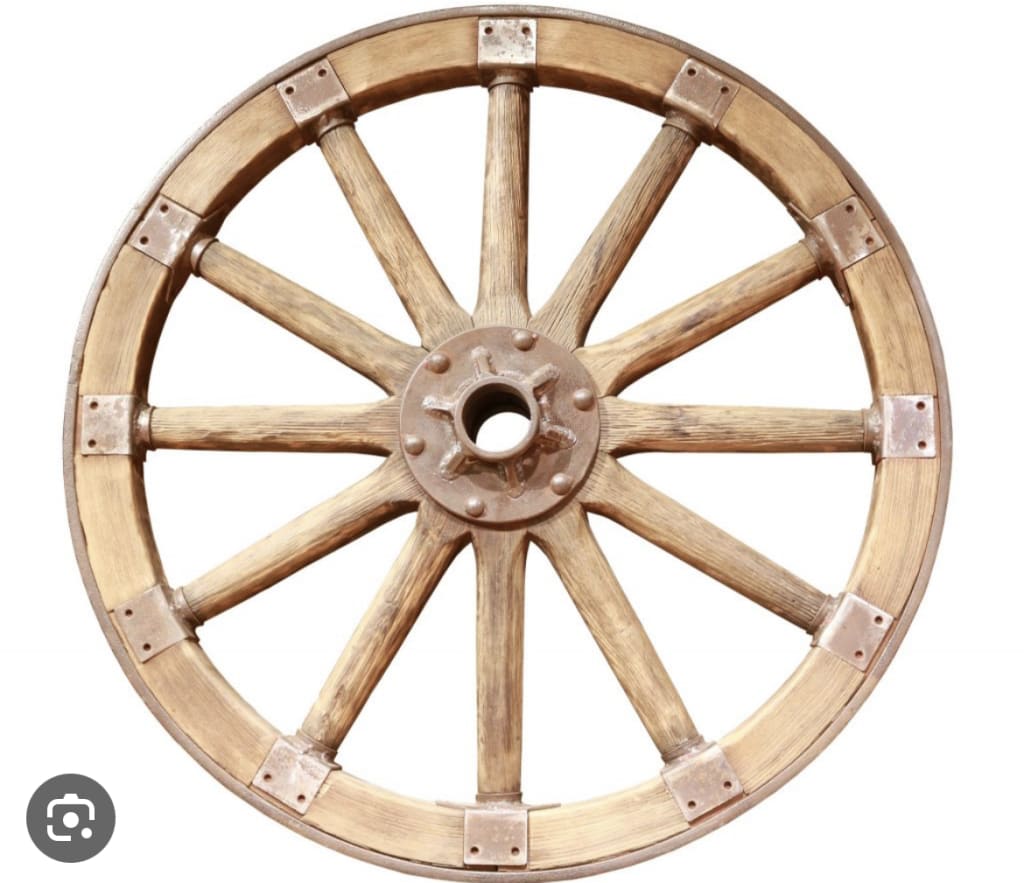
The wheel is one of the most important inventions in human history, and it has had a profound impact on our civilization over the centuries. The earliest known use of the wheel dates back to around 3500 BC in Mesopotamia, which is now modern-day Iraq. However, the concept of the wheel had been developed independently in different parts of the world, including in ancient China and Mesoamerica, where it was used for toys and pottery.
The earliest wheels were simple discs made of stone, wood, or clay, and they were used for transportation of goods and people. They were often attached to carts or chariots pulled by animals, such as oxen or horses, and allowed for the efficient transportation of heavy loads over long distances. The invention of the wheel revolutionized transportation and made it possible for people to travel further and faster than ever before.
Over time, the wheel evolved and became more advanced. The ancient Greeks and Romans developed sophisticated wheeled vehicles, such as the chariot, which was used for both transportation and warfare. The chariot was a light, two-wheeled vehicle that was pulled by horses and used in battle to carry soldiers and weapons. It was also used in sporting events, such as chariot racing, which was a popular pastime in ancient Rome.
In the Middle Ages, the wheel continued to be an important technology, and it was used for a variety of purposes, such as milling grain, pumping water, and powering machinery. The development of the water wheel in the 1st century BC marked a major milestone in the history of the wheel, as it allowed for the efficient generation of mechanical power. The water wheel was used to power mills, which were used for grinding grain and other materials, and it was also used to power pumps and other machinery.
During the Industrial Revolution in the 18th and 19th centuries, the wheel became even more important, as it was used to power machines that revolutionized manufacturing and transportation. The invention of the steam engine in the late 18th century made it possible to power machines with steam, and this led to the development of the steam-powered locomotive, which was used for transportation of goods and people over long distances.
In the 20th century, the wheel continued to evolve and become more advanced. The invention of the automobile in the late 19th century marked a major milestone in the history of the wheel, as it allowed for the efficient transportation of people and goods over long distances. The automobile was powered by an internal combustion engine, which was fueled by gasoline or diesel fuel, and it quickly became an important mode of transportation around the world.
Today, the wheel is an essential technology that is used in a wide range of applications, from transportation to manufacturing to power generation. Modern cars, trucks, and airplanes all rely on wheels for efficient transportation, and the development of new materials and technologies has made the wheel stronger, lighter, and more durable than ever before.
In conclusion, the history of the wheel is a long and fascinating one, and it has played a crucial role in the development of human civilization over the centuries. From its humble beginnings as a simple disc made of stone or clay to its modern incarnation as a high-tech, precision-engineered component, the wheel has revolutionized transportation, manufacturing, and power generation, and it continues to be an essential part of our modern world.In addition to its practical applications, the wheel has also played an important role in human culture and symbolism. The wheel has been used as a symbol of progress, innovation, and change, and it has been associated with important religious and spiritual traditions around the world.
For example, the wheel is an important symbol in Hinduism, Buddhism, and Jainism, where it represents the cycle of birth, death, and rebirth, and the spiritual journey towards enlightenment. The wheel is also an important symbol in ancient Celtic and Norse mythology, where it represents the cycles of the seasons and the natural world.
The wheel has also played an important role in art and design, and it has been used as a motif in a wide range of artistic styles and movements, from ancient Egyptian art to modern graphic design. The wheel has been used to create intricate patterns and designs, and it has been used as a symbol of movement, flow, and change.
Despite its importance and ubiquity, the wheel is still a subject of ongoing research and development. Scientists and engineers are constantly working on new materials and technologies to improve the design and performance of wheels, and to explore new applications and uses for this remarkable invention.
For example, researchers are developing new materials, such as carbon fiber composites, that are stronger, lighter, and more durable than traditional materials like steel and aluminum. These new materials are being used to create high-performance wheels for racing cars, bicycles, and other applications.
Engineers are also working on new designs for wheels that can improve efficiency and reduce energy consumption. For example, the "smart wheel" is a new type of wheel that incorporates sensors and other technologies to monitor road conditions, adjust tire pressure, and optimize performance for different driving conditions.
In conclusion, the history of the wheel is a rich and complex one, and it has had a profound impact on human civilization over the centuries. From its humble beginnings as a simple disc made of stone or clay to its modern incarnation as a high-tech, precision-engineered component, the wheel has revolutionized transportation, manufacturing, and power generation, and it continues to be an essential part of our modern world. As we move into the future, the wheel will undoubtedly continue to evolve and improve, and it will remain an important symbol of progress, innovation, and change.





Comments
There are no comments for this story
Be the first to respond and start the conversation.